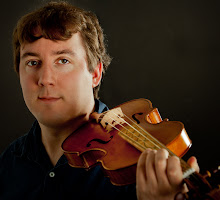I digress. Go challenged my comments; in comparing my opinion of an ideal last movement to what Mozart wrote for his violin concerti, I was "trying to measure the weight of an orange with a ruler" (which technically can be done, if the ruler puts aside his country's needs for a few moments and picks up a pair of scales). He said that ending a movement with a graceful dance was part of the "spirit of the times"; Mozart merely writing within that spirit. "Think of the Chaconne", Go urged, which came at the end of a suite or French opera act in Baroque times. I'm not sure I entirely agree with his logic here. The Chaconne and other Baroque dances were part of suites, or large scale works that prominently featured movements clearly referencing dance styles, like Bach's Passions. The Chaconne worked so well as a final dance, because it was the grand culmination of other dances, and thus faithful to the whole work. In Baroque times, a composer would not have written a suite consisting of an Allemande, a Courante, a Sarabande, a Gigue, and then finished with a triumphant sonata-rondeau with five minute apotheosis. Even if they had that form, they wouldn't have chosen to finish with it - it would have been entirely inappropriate and out of style. So why is it appropriate that a Classical concerto, with a sonata form first movement and lyrical slow movement should end with a minuet? It just doesn't feel right (to me)!
As a third movement, a minuet is fine (there's nothing wrong with a minuet, by the way - it's how it's used in context that I'm talking about), but then a third movement minuet is typically followed by a fourth movement, in symphonic and string quartet form at least. It's this fourth movement that finally and satisfyingly completes the package. I will say that Mozart's fifth concerto is a slight exception - although the last movement starts with a minuet, he interrupts it with the awesome Turkish dance: in a way he combines third and fourth movement styles all in one. So Mozart's stock goes back up a little with the existence of the fifth concerto. He was starting to know what he was doing by this stage.
So then, let's measure the weight of an orange with a pair of scales, and compare Mozart's violin concerti with his piano concerti. I'm not familiar with all of the piano concerti, but the several that I do know - mostly the late ones in the 20s - end not with a minuet but with a fully elaborate sonata rondeau. In my opinion this is a much more satisfactory ending in keeping with the spirit of the music; because it's not so much the spirit of the times that counts for me as it is the spirit of the music. A minuet may have been within the spirit of the times, but placing it as a final movement, following on from such great first movements, does not do it for me.
I will admit to one thing, though. No matter how much one might consider a piece bad, when it comes down to it, any such piece can be taken by the hands of a phenomenal musician and turned into gold. Go also mentioned in his blog some of his favourite pieces - amongst them were Beethoven's Spring Sonata, Romance in F, Vivaldi's Four Seasons and Dvorak's American string quartet, works at which I cringe even to see them written down. But just because these pieces have been butchered by every twelve year old student round the world does not mean that they aren't really good pieces. Even the most overplayed piece by young violinists ever - Monti's Czardas - can be turned into one of the most brilliant pieces of music making I've ever seen:

No comments:
Post a Comment